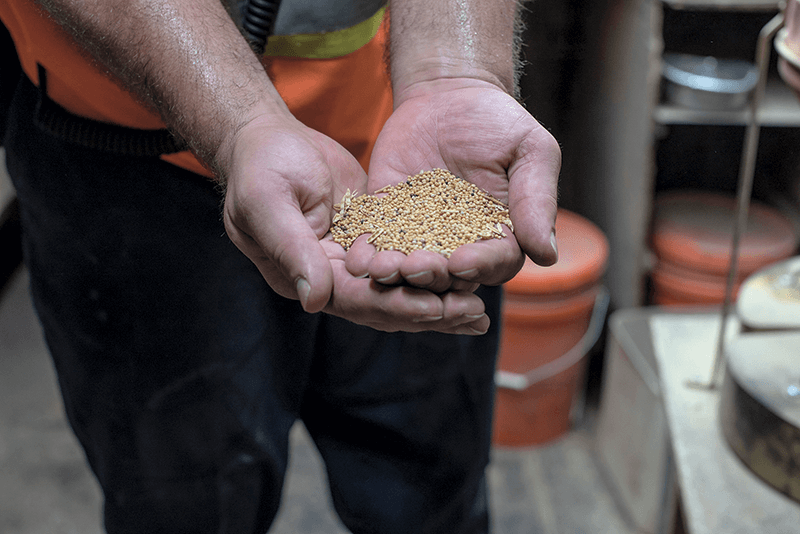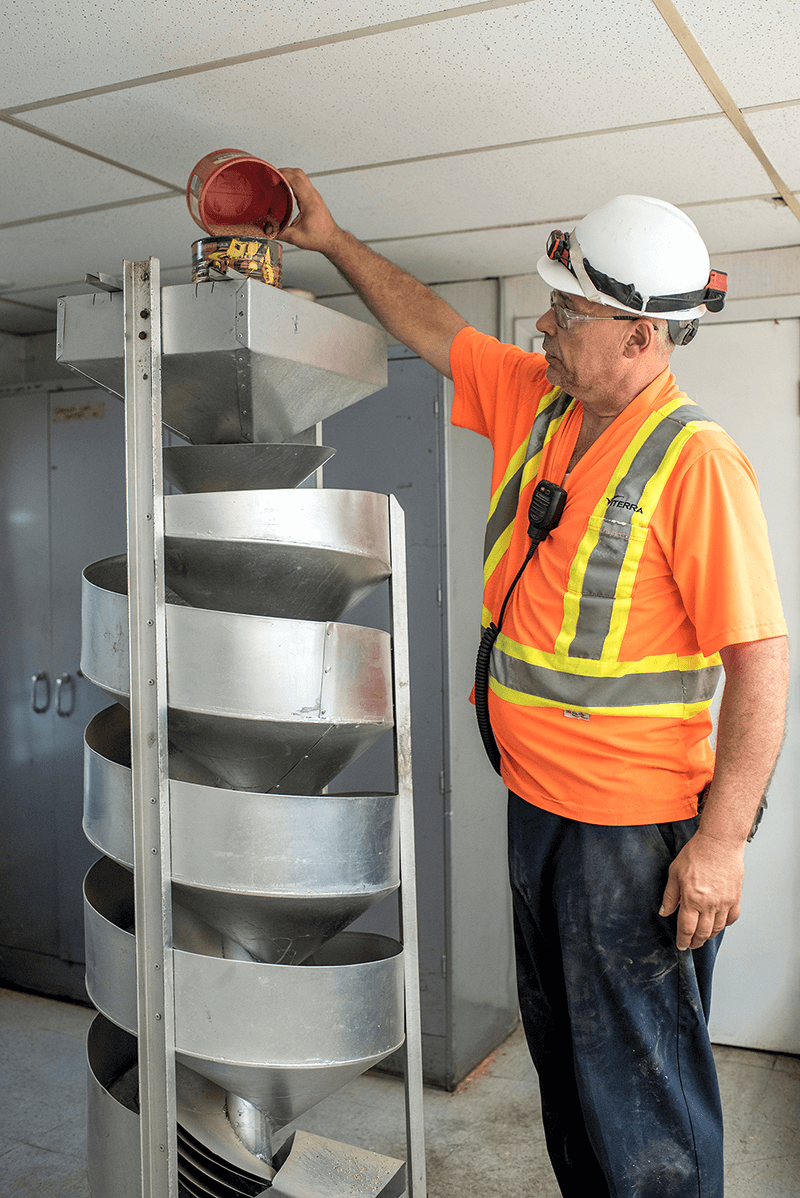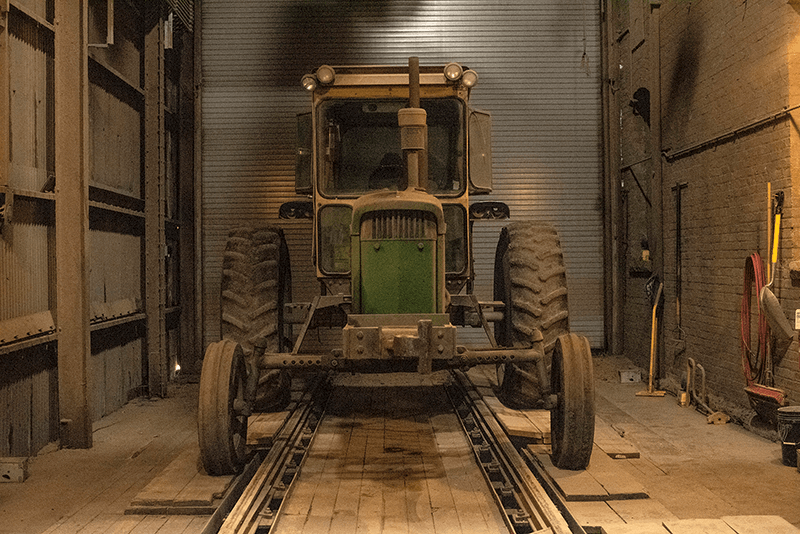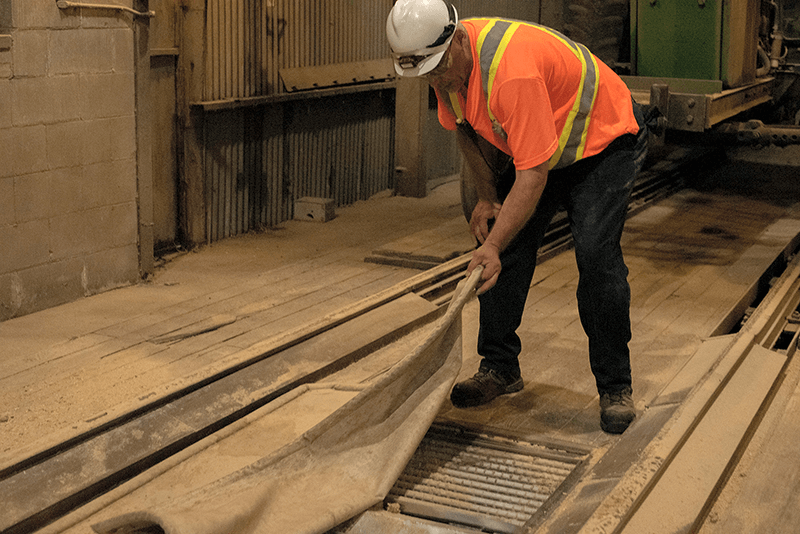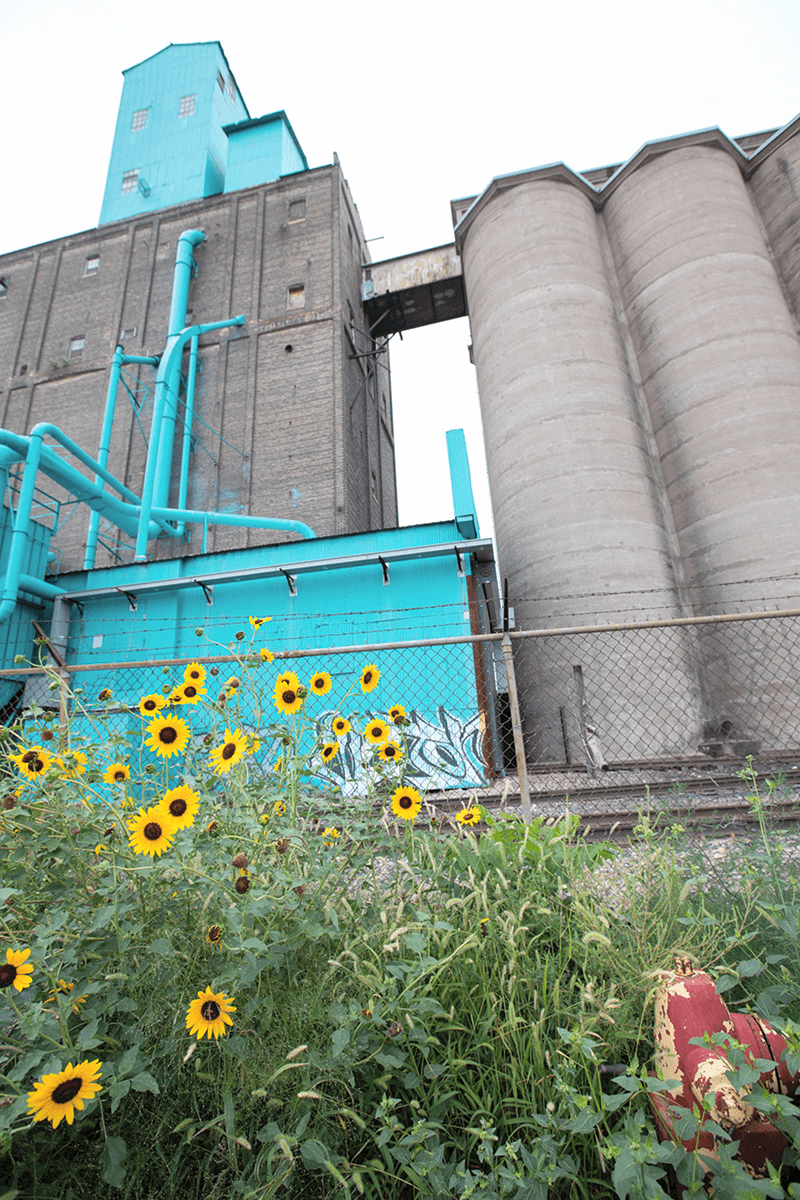If you’ve put mustard on a hot dog – or on anything else for that matter – that mustard could have had origins in Northeast’s Viterra plant. You probably have noticed the Viterra structures – two rows of nine brick 80-foot silos topped by a blue-green tower, located just off of California Street, near the BNSF railroad yards – but have you ever wondered what goes on in there?
Owned by Viterra, a Canada-based global grain handling company, the Northeast facility solely deals with mustard seed, said Monte Gunia, the recently retired manager. Gunia, a former Northeast Minneapolis resident who now lives in Fridley, worked there 35 years, since the plant was converted from processing mainly corn and barley, to processing only mustard seed.
Gunia shared his knowledge and assistant manager Keith Sokoloski gave a tour of the facility, tracing the journey that the mustard seed takes from the fields to your hot dog.
The flowers of Sinapis alba – the scientific name for white mustard seed – are yellow, and the seeds are round, about one to one-half millimeter in diameter. The seed that passes through the Viterra facility is grown mainly by Canadian farmers in southern Saskatchewan and Alberta, with some grown in northern North Dakota and northern Montana.
Gunia described the big picture: The company contracts with farmers to grow the seed, guaranteeing them both a price and a market, and then picks it up from their farms. It’s transported by truck or rail to Northeast Minneapolis, the seed is cleaned in the facility and either packaged in bags or loaded into hopper-bottom trucks – about 50,000 pounds of mustard seed – or whole railcar loads of 200,000 pounds. Then it’s delivered to the companies that make mustard. “Plochman’s, French’s, Woeber’s, whoever makes mustard, we sell it,” said Gunia. Mustard is also used as a spice and binder in meats such as bologna, sausage, and hot dogs, said Sokoloski.
Walking through the ground-level part of the facility, Sokoloski detailed how the mustard seed is received and processed, pointing out the late 1950s 420 John Deere tractor that’s used to pull rail cars into the covered receiving area. He lifted the floor covers to show the openings to the below-ground holding pit, where the seed is dumped through slides on the bottom of the railcar or hopper truck. On the other side of the building a beam balance that can measure up to 300,000 pounds is used to weigh cars empty and full to determine the weight of the seed.
The seeds from each truck or railcar are sampled and tested for quality and their grade determines how they can be used. They’re also tested for moisture content. If they’re too wet, the enzymes in the seeds continue to carry out chemical reactions, Sokoloski explained, so they need to go into a propane-fueled dryer adjacent to the building before going into the silos.
As in other grain elevators, the seed is transported from the holding pit into the silos by rows of buckets on a belt. Each silo can hold 1.3 million pounds of mustard seed, Gunia said.
As Sokoloski walked through the processing facility, showing the mechanisms involved in cleaning the seed, it was clear that the age of the tractor and the beam balance in the receiving areas were not anomalies. There’s very little that’s digital in the building, which was built in the 1920s. The equipment that transfers and cleans the seeds is all mechanically controlled, by levers, pulleys and slides. When seed needs to be fed from a silo to the air screener, for example, a worker simply lifts the pipe attached to that silo and connects it to the screener.
The cleaning process has three steps, with the goal being to separate good mustard seeds from other plant material as well as from seeds from weeds and crops grown previously in the field, such as lentils, buckwheat and wheat.
First the seed goes through an indent machine, a series of rotating cylinders with golf ball-sized dimples that collect the seeds and allow other materials to drop out. Then the seed is put through an air screen-cleaner – a series of screens with different sized openings that further select for the mustard seed, while a stream of air helps remove very light seeds and chaff. Finally, the seeds are allowed to spin through a spiral separator, which uses gravity and centripetal force to separate round seeds from split or flat seeds.
During this process, samples are taken every half-hour from the air screener and every hour from the spiral separator to ensure that the product is of the desired grade. In the sampling room, there’s a spiral separator about six feet high, as well as a small version of an air screener; both are used to simulate the screening and separating process and determine the quality of incoming shipments of seeds.
Once the seed is cleaned to specifications, it’s loaded into a rail car or hopper-bottom truck and transported to customers. Seed that is to be bagged moves by a conveyor belt into a separate building for packaging and shipping,
The next time you pass by the Viterra tower, or the next time you enjoy mustard on a sandwich, think about the 50 million pounds of mustard seed that Gunia said pass through the facility each year. Think grateful thoughts about the mustard seed farmers, the people that transport it, and especially the 12 workers at Viterra right here in Northeast who make sure mustard-makers get the quality of seed they need.
Below: Mustard seed is cleaned, sorted and shipped from the Viterra grain elevator at 3110 California Street in Northeast. Approximately 50 million pounds leave the facility each year. Keith Sokoloski runs seed through a spiral separator in the sampling room. A 1950s 420 John Deere tractor is used to pull rail cars into the facility. Keith Sokoloski uncovers the holding pit for the mustard seed. (Photos by Karen Kraco) The exterior of the Viterra processing plant. Each silo holds 1.3 million pounds of mustard seed. (Photo by Nik Linde)
